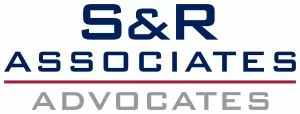By a judgment dated November 15, 2019, the Supreme Court of India has put an end to the long drawn out battle for the acquisition of steel giant – Essar Steel India Limited ("Essar Steel") under India's newly introduced insolvency legislation. Essar Steel's overdue debt of about INR 550 billion (approximately USD 7.6 billion) was the largest among the companies being resolved under the (Indian) Insolvency and Bankruptcy Code, 2016 ("IBC"). The judgment also clarifies several key issues under the IBC, which should aid the resolution of future cases under the IBC.
Background
ArcelorMittal India Private Limited ("ArcelorMittal") emerged as the successful resolution applicant for Essar Steel when its resolution plan was approved by the committee of creditors ("CoC") of Essar Steel on October 25, 2018.
Under ArcelorMittal's resolution plan, the manner of distribution of funds among the secured financial creditors was left to the discretion of the CoC. The CoC agreed on pro rata distribution of funds to all secured financial creditors except Standard Chartered Bank ("Standard Chartered"). According to the CoC, Standard Chartered was differently placed from the other secured financial creditors as it was not a direct lender to Essar Steel (it had been issued a guarantee by Essar Steel for an offshore subsidiary's debt) and its debt was secured by a pledge over Essar Steel's shares of the offshore subsidiary and not a charge over the project assets of Essar Steel. Based on the nature and value of Standard Chartered's security, the CoC proposed to pay Standard Chartered approximately INR 600 million (approximately USD 8.4 million) resulting in 1.7% recovery.
ArcelorMittal's resolution plan proposed to pay operational creditors with a claim amount of less than INR 10 million (approximately USD 0.14 million) in full, and INR 10 billion (approximately USD 139 million) towards the dues of operational creditors with an admitted claim of over INR 10 million. Unsecured financial creditors were offered around 4% recovery.
The approval of ArcelorMittal's resolution plan was challenged by various parties, such as, Standard Chartered, several operational creditors and the suspended board of directors and former promoters of Essar Steel.
NCLT
ArcelorMittal's resolution plan was conditionally approved by the National Company Law Tribunal, Ahmedabad Bench ("NCLT") on March 8, 2019. In its order, the NCLT suggested that the CoC reconsider the manner of distribution of funds proposed to be paid under ArcelorMittal's resolution to ensure higher recovery to operational creditors and Standard Chartered.
NCLAT
The order of the NCLT was challenged before the National Company Law Appellate Tribunal ("NCLAT"). By an order dated July 4, 2019 ("NCLAT Order"), the NCLAT: (i) approved ArcelorMittal's resolution plan, (ii) modified the distribution of amounts proposed to be paid to various creditors under such resolution plan so that all creditors (secured, unsecured and operational) were treated at par (resulting in approximately 60.7% recovery for all creditors), (iii) increased the admitted claims of operational creditors to almost four times the original amount, (iv) granted operational creditors whose claims had not been admitted by the NCLT or the NCLAT the liberty to institute or continue appropriate proceedings against Essar Steel even after the conclusion of its insolvency resolution process, and (v) held that the guarantees issued in respect of Essar Steel's debt could not survive after the conclusion of the insolvency resolution process as the underlying debt stood discharged
Supreme Court
Appeals were filed before the Supreme Court of India challenging various aspects of the NCLAT Order.
Legislative developments
While the appeals before the Supreme Court were pending, the Insolvency and Bankruptcy Code (Amendment) Act, 2019 dated August 6, 2019 (the "IBC Amendment Act") was introduced with retrospective effect to: (i) modify the minimum payment to operational creditors under a resolution plan to the higher of the liquidation value and the amount payable to such creditors if the resolution amount was distributed in accordance with Section 53 of the IBC, (ii) provide for the minimum payment of liquidation value to dissenting financial creditors, and (iii) state that the CoC could determine the manner of distribution of funds under a resolution plan which could take into account the respective priority of creditors under Section 53(1) of the IBC. An explanation to Section 30(2)(b) of the IBC was also introduced, which expressly clarified that a distribution in accordance with such section would be considered to be "fair and equitable".
Writ petitions were filed by Standard Chartered and certain operational creditors challenging the constitutionality of the IBC Amendment Act. As the IBC Amendment Act had a direct bearing on the Essar Steel insolvency matter, such writ petitions were heard by the Supreme Court together with the appeals filed against the NCLAT Order.
The verdict of the Supreme Court
By a judgment dated November 15, 2019 ("SC Judgment"), the Supreme Court has settled several issues that have plagued the insolvency resolution process in India since the inception of the IBC:
Treatment of financial creditors and operational creditors and the scope of review of the CoC's decisions
The SC Judgment unequivocally held that the principle of "equality" could not be interpreted to mean that all creditors (irrespective of their security interest or their status as operational or financial creditor) would be entitled to equal recovery under a resolution plan.
The SC Judgement held that even within a class of secured financial creditors, differential treatment based on the value of security of such creditors would be permissible. The Supreme Court observed that if the security interest of the creditors was to be disregarded, such creditors would, in many cases, be incentivized to vote for liquidation rather than resolution of the corporate debtor. This would defeat the key objective of the IBC, i.e., to facilitate the revival of stressed assets.
With respect to operational creditors, the Supreme Court recognized that the IBC itself contemplated operational creditors as a separate class of creditors. Certain safeguards, such as, priority in repayment were also built into the IBC to ensure the fair and equitable dealing of such operational creditors' rights. Accordingly the SC Judgement held that, as long as the provisions of the IBC were complied with, the CoC could approve resolution plans which provided for differential payment to financial and operational creditors.
While the SC Judgment provides that the ultimate discretion of deciding the distribution of funds lies with the CoC, it states that such decision should indicate adequate consideration of the objectives of the IBC. Accordingly, the Adjudicating Authority should ensure that the decision of the CoC takes into account the following factors: (i) corporate debtor should be kept as a going concern during the resolution process, (ii) value of assets of the corporate debtor should be maximized, and (iii) interests of all stakeholders should be balanced.
Extinguishment of claims
The NCLAT had allowed creditors of Essar Steel whose claims had not been decided on merits by the NCLT or the NCLAT to pursue their claims against the corporate debtor even after the completion of the insolvency resolution process. However, the Supreme Court unequivocally held that all "undecided" claims of the corporate debtor stand extinguished once a resolution plan was accepted. The SC Judgment recognized that a prospective resolution applicant would need to know the total debt of the corporate debtor before acquiring it and start the business of the corporate debtor on a "fresh slate".
Extinguishment of the right to subrogation for payments made under the guarantees
The SC Judgment upheld the provision in the resolution plan which required that there would be no right to subrogation in respect of any amounts paid under the guarantees extended in respect of the debt of the corporate debtor.
Time period for completion of resolution process pursuant to the IBC Amendment Act
The IBC Amendment Act requires all corporate insolvency resolution processes to be "mandatorily" completed within a period of 330 days from the insolvency commencement date. For the resolution processes already underway, including if subject to litigation, a maximum period of 90 days from commencement of the IBC Amendment Act has been granted for completion of the process.
The Supreme Court has read down such provision by removing the word "mandatorily" before the stated timelines. The Supreme Court held that ordinarily the process should be completed within the prescribed timelines, failing which liquidation proceedings would be commenced. However, the Adjudicating Authority could exercise judicial discretion and provide relief in exceptional cases where the failure to adhere to such timelines could not be attributed to any fault of the litigants.
Role of the resolution professional and the CoC under the IBC
The SC Judgment highlights that it is the duty of the resolution professional to preserve and protect assets of the corporate debtor, including its continued business operations. The SC Judgment also makes it clear that the resolution professional is required to only collect, collate and admit claims without adopting an adjudicatory role. These claims are then to be finally negotiated and decided by the CoC.
The Supreme Court recognizes that though the duty to run the corporate debtor as a going concern is of the resolution professional, the most important management and business decisions in respect of the corporate debtor would be in the hands of the CoC. The SC Judgement makes it clear that it is the CoC which is in the driver's seat for directing the insolvency resolution process.
Conclusion
The SC Judgment rightly set aside the principle of equality of all creditors as laid down in the NCLAT Order. The Supreme Court notes that the equality principle cannot be stretched to treating unequals equally, as that will destroy the very objective of the IBC – to resolve stressed assets. The NCLAT Order, if upheld, would have resulted in similar recovery for secured and unsecured creditors even though secured creditors are able to lend at lower interest rates only because of their ability to fall back on the security provided by the borrowers. Disregard of the security interests of the creditors would have made secured lending unattractive resulting in catastrophic consequences on the Indian banking sector which is already afflicted by high interest rates.
The Supreme Court's ruling on extinguishment of all past claims (including undecided claims) also brings much respite to bidders, who may otherwise have been unwilling to invest in insolvent companies under the IBC. The threat of being subject to significant undisclosed liability and possibility of endless litigation upon acquisition of the corporate debtor has deterred investment in many cases under the IBC.
S&R Associates represents ArcelorMittal in its proposed acquisition of Essar Steel and related proceedings.
This insight/article is intended only as a general discussion of issues and is not intended for any solicitation of work. It should not be regarded as legal advice and no legal or business decision should be based on its content.


